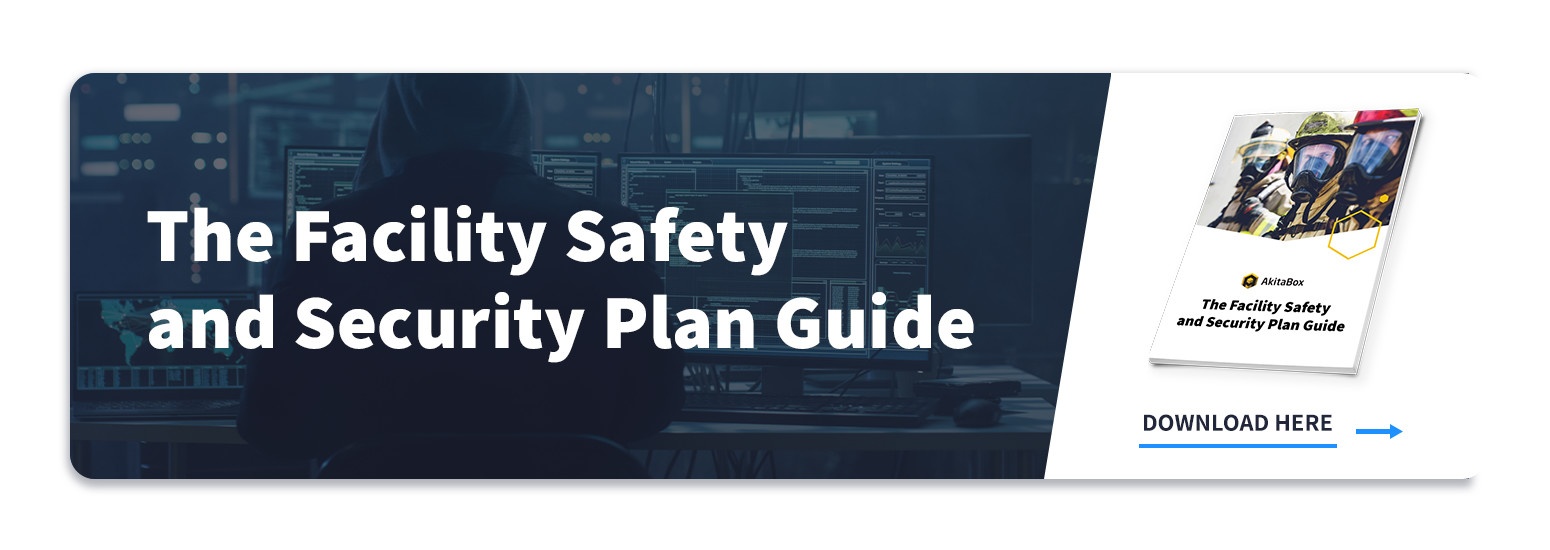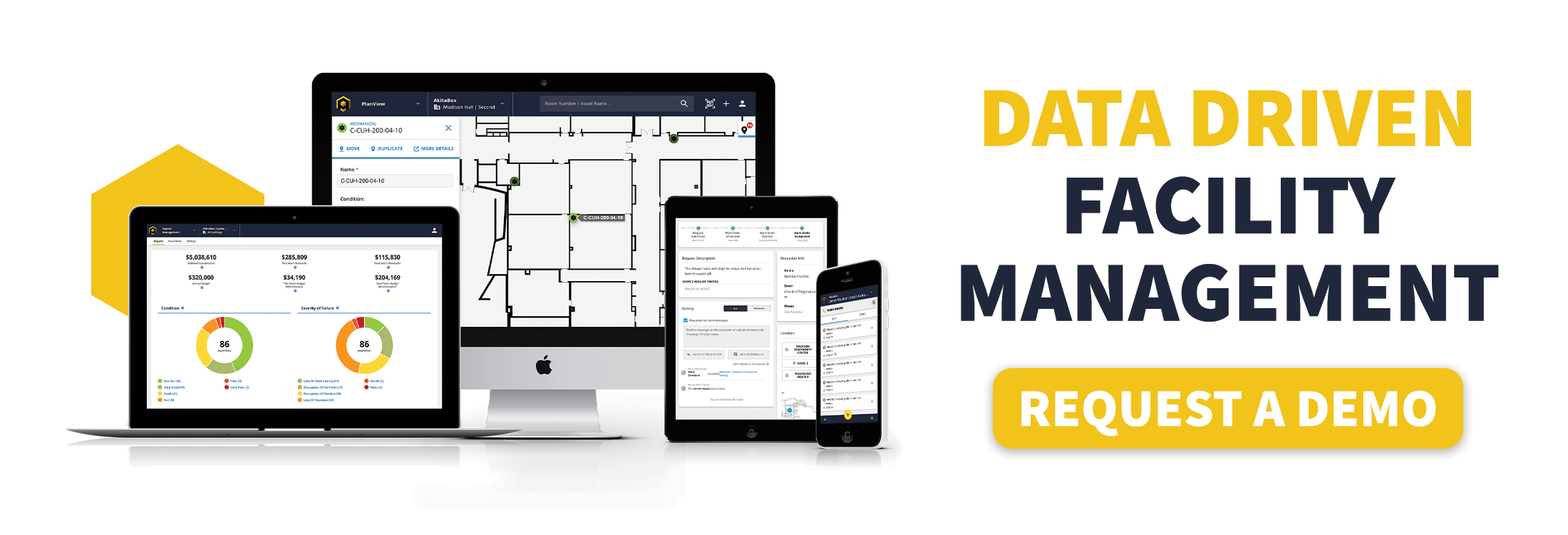10 Steps to Creating an Emergency Response Plan for Your Business
In an emergency, the actions you take within the first few minutes will largely dictate the severity of consequences to follow. Unexpected situations can happen at any time, which means your company needs a plan of action in order to minimize damage and loss.
This article walks you through the 10 steps involved in creating an effective emergency response plan for your business. You’ll learn how to effectively respond to emergencies, protect your staff and occupants, minimize downtime and fully recover operations. Here’s how to get started.
Running short on time? Download the Safety and Security Plan Guide here.
Emergency Response Planning for Business Continuity Teams
Step 1: Understand the importance of emergency response planning.
Planning for interruptions, emergencies and disasters is a crucial aspect of running a business. An emergency response plan is designed to help companies address various emergency situations that could occur within their organization. The best plans include who to contact, how to act in an emergency, how to mitigate risk and what resources to use to minimize loss.
The main objective of an emergency response plan is to reduce human injury and damage to property in an emergency. It also specifies which staff members should enact emergency response plans, as well as which local emergency teams (i.e. police, fire and rescue, etc.) should be contacted. Ideally, the final outcome of emergency planning is to protect a company’s finances, physical infrastructure, materials and occupants from harm.
Step 2: Brainstorm a list of potential risks, hazards and threat scenarios.
All organizations face risks, hazards and threats, which, left unchecked, can lead to financial loss, illness, injury or even death. It’s a good idea to review potentially dangerous scenarios in a risk assessment. A risk assessment identifies potential hazards and analyzes what could happen if the hazard were to occur.
Understanding your organization’s vulnerabilities is the first step towards proactive emergency response planning and will help you protect your staff and occupants from harm.
In your risk assessment, be sure to prioritize risks according to their severity. Consider the following examples of emergency scenarios:
|
|
Step 3: Collect contact information from local emergency personnel.
The list of potential risks you assembled in step #2 will help inform your organization of emergency services you’ll need to contact in a crisis. At a minimum, speak to your local fire department, police department and emergency medical services to determine their anticipated response times, their knowledge of your facility and its hazards, and their capabilities to stabilize an emergency at your facility.
The following list contains a more comprehensive list of emergency personnel you may want to contact:
|
|
Step 4: Assess your organization’s resources.
Resources are required to keep occupants safe, protect infrastructure and carry out recovery strategies during a disaster. You’ll want to assess the availability and capabilities of resources for incident stabilization within your organization. Resources can include people, systems and equipment, both within your business and from external sources. Here’s a list of resources you may want to consider:
|
|
Step 5: Create accurate egress plans and evacuation routes.
An egress plan is a map of a facility that houses critical indicators such as posted emergency routes, evacuation paths and red exit signs that lead to stairs and doorways. Even if occupants have never done a fire drill at the facility, it should be obvious where to go in an emergency.
Police officers, medical personnel and other emergency services also rely on accurate floor plans. They help notify emergency services of the best ways to enter a building to get to a threat quickly, safely and efficiently.
Free Resource: Create or update your facility plans in our free guide on “How to Create An Egress Plan”. If you’re looking for more insight on creating up-to-date floor plans, contact a professional facility management consultation company today for advice on how to get the most accurate floor plans.
- Pro Tip: No time to update your floor plans? A data collection service team can do the work for you. They will walk your current floor plans, collect space and asset data, and create two-dimensional models of your plans. An intuitive facility management software can also be used as a visual mapping tool to show the location of critical fire/life safety assets in an emergency. Show your business continuity team, building managers and local emergency personnel the locations of the following within and around your building:
-
- Emergency exits
- Exterior doors and windows
- Locations of fire extinguishers
- Fire alarm pull station locations
- Assembly points for personnel
Step 6: Create an emergency communications plan.
An emergency communications plan includes information on how both internal and external crisis communications will be handled. Internal communication alerts can be sent via email, paging systems, voice messages or text messages to mobile devices. Use these channels to instruct personnel on how to evacuate the building and relocate to assembly points. You may also send updates on the status of the situation and notification of when it’s safe to return.
External communication during an emergency should also be a part of business continuity planning. External alerts typically discuss the disaster with the media and provide status information to key clients and stakeholders. Your emergency communications plan must be flexible, have management support and be regularly reviewed and updated to address a variety of emergency situations.
Step 7: State required actions in the event of an emergency.
Develop protective, threat-specific emergency procedures for occupants, staff and visitors of your facility to follow in a disaster situation. This portion of your emergency response plan will detail life safety protocols, including evacuation, shelter, shelter-in-place and lock down actions. You’ll also want to determine the required actions that occupants should take during an emergency to protect themselves. Use the following example as a guide for required actions in an emergency:
- Declare an emergency.
- Alert personnel using an internal communication system (see step #6).
- Activate the emergency plan.
- Evacuate the danger zone, seek shelter-in-place or implement a lock down.
- Close main shutoffs, if applicable.
- Call for external aid from local emergency services.
- Initiate rescue operations.
- Attend to casualties, if applicable.
Step 8: Disperse responsibilities following the disaster event.
During and following an emergency, many tasks must be completed in order to continue business as usual and ensure occupants are both safe and comfortable. The following list contains responsibilities that will need to be taken care of following a disaster:
|
|
Step 9: Train and educate internal personnel on your emergency response plan.
Your business continuity team, as well as your emergency preparedness team, will require continuous training to stay up-to-date on the latest emergency protocols in your business. Education and hands-on training will help your team members fulfill their roles and responsibilities during and after a disaster.
Facilitate exercises that test your team’s knowledge of the emergency response plan. Your emergency preparedness team may also want to host corporate safety awareness programs, orientation exercises, emergency responder training or emergency communication exercises. Learn more about business continuity planning best practices here.
Step 10: Test and revise your emergency response plan.
Creating a comprehensive plan for handling emergencies is a major step toward preventing and recovering from disasters. However, it can be difficult to predict all situations that could occur until the plan is tested.
To put your plan into action, conduct exercises and drills to practice critical portions of the plan. This could involve sending test messages via your emergency notification systems, or practicing an evacuation or lock down. These tests will highlight areas of improvement before a disaster actually occurs.
When shortcomings become apparent, review and revise your plan. Revisit it at least once a year and note any changes to building infrastructure, processes, materials, resources and key personnel.
Discover More Ways to Protect Your Business from Disaster
When an unexpected disruption affects your business, it’s important to respond quickly. A business continuity plan can help you stay prepared (not to mention, it may make the difference between financial ruin and long-term survival of your company). Read tips for protecting your business from harm by reading AkitaBox’s five-step guide to Business Continuity Planning. This comprehensive article will help your organization achieve the following goals:
- Understand the importance of business continuity planning
- Conduct a business impact analysis
- Take steps to reduce identified risks and hazards
- Create risk mitigation guidelines
- Assemble recovery plans
You also may find it helpful to download the checklist version of this article for later reference. Click here to receive your free copy of “10 Steps to Creating an Emergency Response Plan”.
Let Us Know: What steps has your organization taken to prepare for emergencies? Leave a comment below to let us know!



